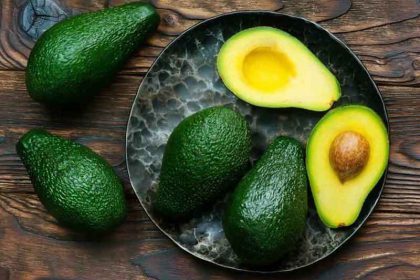Canola benefits for skin and hair and weight loss
Canola
Canola benefits for skin and hair and weight loss on Nicholi site. We hope this article will be of interest to you.
Rapeseed oil, also known as canola oil, offers several potential benefits for heart health, due to its high monounsaturated fat content. It contains a good balance of omega-3 and omega-6 fatty acids, which support brain function and reduce the risk of chronic diseases. Rapeseed oil also has anti-inflammatory properties and is a good source of vitamin E. It has a high smoke point, making it versatile for cooking methods. While rapeseed oil is generally safe, some individuals may have allergies or digestive issues. It is used in cooking, food products, animal feed, biodiesel, and various industrial applications. Canola oil is not banned in Europe, and both rapeseed oil and canola oil are healthy choices when consumed in moderation. However, concerns exist about the balance of omega-6 to omega-3 fatty acids and processing methods. Rapeseed oil and olive oil have distinct flavors and fatty acid compositions, while rapeseed oil and canola oil are essentially the same with slight regional differences. Rapeseed oil is suitable for frying due to its high smoke point and neutral flavor. It is used in cooking, salad dressings, baking, and mayonnaise. Canola oil is generally safe, but an imbalanced omega-6 to omega-3 ratio and individual sensitivities should be considered.
Rapeseed oil benefits
Rapeseed oil, also known as canola oil, offers several potential benefits due to its nutritional composition. Here are some of the benefits associated with rapeseed oil:
Heart Health: Rapeseed oil is rich in monounsaturated fats, particularly oleic acid, which is known for its heart-healthy properties. Consuming monounsaturated fats in place of saturated and trans fats can help lower LDL (bad) cholesterol levels, reducing the risk of heart disease and promoting overall cardiovascular health.
Omega Fatty Acids: Rapeseed oil contains a good balance of omega-3 and omega-6 fatty acids, which are essential for the body. These fatty acids play a crucial role in brain function, supporting the development and maintenance of healthy cells, and reducing the risk of chronic diseases such as heart disease, arthritis, and certain cancers.
Anti-Inflammatory Properties: The presence of monounsaturated fats in rapeseed oil, along with other bioactive compounds, may contribute to its anti-inflammatory properties. Consuming rapeseed oil as part of a balanced diet can help reduce inflammation in the body and potentially alleviate symptoms associated with inflammatory conditions.
Vitamin E Content: Rapeseed oil is a good source of vitamin E, a powerful antioxidant that helps protect cells from damage caused by free radicals. Vitamin E also supports the immune system, promotes healthy skin, and plays a role in maintaining eye health.
Cooking Versatility: Rapeseed oil has a high smoke point, making it suitable for a variety of cooking methods, including frying, sautéing, baking, and grilling. Its neutral flavor allows it to be used in a wide range of recipes, from salad dressings to baked goods.
Rapeseed oil side effects
Rapeseed oil, also known as canola oil, is generally considered safe for consumption and does not have significant side effects for most people when used in moderation. However, it’s important to note that individual reactions and sensitivities can vary, and some people may experience adverse effects. A few potential considerations:
Allergies: Like any food product, some individuals may be allergic to rapeseed oil. Allergic reactions can vary in severity and may include symptoms such as itching, hives, swelling, difficulty breathing, or anaphylaxis. If you have known allergies to rapeseed or other related oils, it’s best to avoid rapeseed oil.
Digestive issues: Some individuals may experience digestive discomforts, such as bloating, gas, or diarrhea when consuming rapeseed oil. This can be due to various factors, including individual sensitivity or an underlying digestive condition. If you experience these symptoms after consuming rapeseed oil, it may be best to reduce or avoid its consumption.
Omega-6 fatty acids: Rapeseed oil is high in omega-6 fatty acids, which are essential for the body but need to be balanced with omega-3 fatty acids. An imbalance between these fatty acids in the diet, with excessive omega-6 and insufficient omega-3 intake, can potentially contribute to inflammation and other health issues. It’s generally recommended to consume a balanced ratio of omega-6 to omega-3 fatty acids for optimal health.
What is rapeseed used for?
Rapeseed, also known as oilseed rape, is a versatile crop that is primarily cultivated for its oil-rich seeds. The oil extracted from rapeseed is known as rapeseed oil or canola oil, depending on the variety. Some common uses of rapeseed:
Edible oil: Rapeseed oil is a widely used cooking oil. It has a neutral flavor and a high smoke point, making it suitable for various culinary applications such as frying, baking, sautéing, and salad dressings.
Food ingredients: Rapeseed oil can be found in various processed food products, including margarine, spreads, sauces, mayonnaise, and salad dressings. It is also used as an ingredient in baked goods, snacks, and ready-to-eat meals.
Animal feed: The byproduct of rapeseed oil production, known as rapeseed meal or canola meal, is a valuable protein-rich feed ingredient for livestock, poultry, and aquaculture. It is often used in the formulation of animal feed to provide essential nutrients.
Biodiesel: Rapeseed oil can be converted into biodiesel through a process called transesterification. Biodiesel derived from rapeseed oil is an environmentally friendly alternative to conventional diesel fuel and is used in transportation and industrial applications.
Industrial applications: Rapeseed oil is utilized in various non-food applications, such as lubricants, bio-based plastics, cosmetics, soaps, and detergents.
Soil improvement: Rapeseed is also cultivated as a cover crop or green manure to improve soil fertility and structure. Its deep roots help break up compacted soil and its residue adds organic matter when plowed under.
Why is canola oil banned in Europe?
Canola oil is not banned in Europe. In fact, canola oil is commonly used and widely available in many European countries. Canola oil is derived from the seeds of the canola plant, which is a type of rapeseed. It has gained popularity due to its low saturated fat content and high levels of beneficial monounsaturated fats. However, it’s worth noting that different regulations may exist regarding food labeling and product standards in various countries. It’s possible that certain restrictions or limitations on canola oil exist in specific European countries, but a complete ban on canola oil throughout Europe is not accurate based on the information. It’s always advisable to consult the most up-to-date sources or official regulatory bodies for specific information on food regulations in a particular country or region.
Rapeseed oil bad
Rapeseed oil, commonly known as canola oil, is generally considered to be a healthy oil when consumed in moderation. It has gained popularity due to its beneficial fatty acid composition and low levels of saturated fat. However, like any other food, there are certain considerations to keep in mind:
Omega-6 to omega-3 ratio: Rapeseed oil is relatively high in omega-6 fatty acids, which are essential for the body. However, a high intake of omega-6 fatty acids in the absence of sufficient omega-3 fatty acids can potentially lead to an imbalance. It is generally recommended to maintain a balanced ratio of omega-6 to omega-3 fatty acids in the diet for optimal health.
Processing methods: Some concerns have been raised about the processing methods used to extract and refine rapeseed oil. High-temperature processing or the use of certain solvents may affect the oil’s quality and introduce potential contaminants. However, in many countries, regulations, and standards are in place to ensure the safety and quality of oils produced.
Allergies and sensitivities: While relatively rare, some individuals may have allergies or sensitivities to rapeseed oil. Allergic reactions can manifest as itching, hives, swelling, or difficulty breathing. If you have known allergies or sensitivities to rapeseed or related oils, it’s best to avoid consuming rapeseed oil.
Rapeseed oil vs olive oil
Rapeseed oil and olive oil are both popular edible oils with distinct characteristics and nutritional profiles. Here’s a comparison between the two:
Flavor: Olive oil has a distinct flavor profile with varying degrees of fruitiness, bitterness, and peppery notes, depending on the type and quality. Rapeseed oil, on the other hand, has a milder, more neutral taste that allows the flavors of other ingredients to shine in dishes.
Fatty acid composition: Both oils contain healthy fats, but their compositions differ slightly. Olive oil is predominantly monounsaturated fat, particularly oleic acid, which is considered beneficial for heart health. Rapeseed oil is also high in monounsaturated fats, but it contains a higher proportion of polyunsaturated fats, including omega-6 fatty acids.
Smoke point: The smoke point is the temperature at which an oil starts to smoke and break down, affecting its flavor and nutritional properties. Olive oil has varying smoke points, ranging from around 325°F (163°C) for extra virgin olive oil to around 468°F (242°C) for refined olive oil. Rapeseed oil generally has a higher smoke point, around 400°F (204°C) to 450°F (232°C), making it more suitable for high-heat cooking methods like frying and sautéing.
Antioxidants and phytochemicals: Olive oil is well-known for its high content of antioxidants and phytochemicals, such as polyphenols, which have been linked to various health benefits. These compounds give olive oil its characteristic flavor and contribute to its potential anti-inflammatory and antioxidant properties. While rapeseed oil also contains some antioxidants, the levels are generally lower compared to extra virgin olive oil.
Culinary versatility: Olive oil is often preferred for dressings, dips, and low-heat cooking methods like light sautéing. Its distinctive flavor can enhance the taste of salads, vegetables, and grilled dishes. Rapeseed oil’s milder taste makes it versatile for various culinary applications, including baking, frying, and deep-frying.
Rapeseed oil vs canola oil
Rapeseed oil and canola oil are essentially the same oil, but they may have slight differences based on how they are labeled and regulated in different regions. Here’s a comparison between rapeseed oil and canola oil:
Names and labeling: The term “rapeseed oil” is commonly used in Europe and other parts of the world, while “canola oil” is primarily used in North America and some other regions. Canola oil is a specific type of rapeseed oil that has been developed through breeding to have lower levels of erucic acid and Glucosinolates, making it safe for human consumption.
Fatty acid composition: Both rapeseed oil and canola oil have similar fatty acid profiles. They are rich in monounsaturated fats, particularly oleic acid, which is beneficial for heart health. They also contain a good amount of polyunsaturated fats, including omega-6 fatty acids. Canola oil generally has a slightly lower saturated fat content compared to traditional rapeseed oil.
Smoke point: The smoke point of rapeseed oil and canola oil is similar, ranging from around 400°F (204°C) to 450°F (232°C). This high smoke point makes both oils suitable for various cooking methods, including frying, sautéing, and baking.
Flavor and versatility: Both oils have a mild and neutral flavor, allowing them to blend well with other ingredients without overpowering the taste of dishes. They are versatile oils that can be used for a range of cooking applications, including dressings, marinades, stir-fries, and deep-frying.
Rapeseed oil for frying
Rapeseed oil, also known as canola oil, is suitable for frying due to its high smoke point and neutral flavor. Here are a few reasons why rapeseed oil can be a good choice for frying:
High smoke point: Rapeseed oil has a relatively high smoke point, typically ranging from around 400°F (204°C) to 450°F (232°C). This means it can withstand high temperatures without breaking down or producing smoke. Using an oil with a high smoke point is important for achieving crispy and properly cooked fried foods.
Neutral flavor: Rapeseed oil has a mild and neutral flavor, which allows the natural flavors of the fried food to shine through without imparting a strong taste. This makes it versatile for frying a variety of foods, as it won’t overpower their flavors.
Health benefits: Rapeseed oil is low in saturated fat and contains a good balance of monounsaturated and polyunsaturated fats, including omega-3 and omega-6 fatty acids. It is also cholesterol-free. These qualities make it a healthier choice compared to oils with higher levels of saturated fats, such as certain vegetable oils or animal fats.
When frying with rapeseed oil, it’s important to follow general frying guidelines:
Use an appropriate frying vessel: Use a deep pot or a deep fryer with enough oil to fully submerge the food without overcrowding.
Maintain the proper temperature: Preheat the oil to the desired frying temperature before adding the food. Keep the oil at a consistent temperature throughout the frying process to ensure even cooking and minimize oil absorption.
Drain excess oil: After frying, use a slotted spoon or a wire rack to drain excess oil from the fried food. This helps to reduce the overall oil content of the dish.
What is rapeseed oil used for
Rapeseed oil, also known as canola oil, is a versatile oil with various uses in both culinary and non-culinary applications. Here are some common uses of rapeseed oil:
Cooking oil: Rapeseed oil is widely used as a cooking oil due to its neutral flavor and high smoke point. It is suitable for a range of cooking methods such as frying, sautéing, baking, and grilling.
Salad dressings and marinades: The mild flavor of rapeseed oil makes it a popular choice for making salad dressings, vinaigrettes, and marinades. It can be used as a base oil to blend with other ingredients and enhance the flavors of salads and marinades.
Baking and desserts: Rapeseed oil is commonly used in baking recipes as a substitute for other fats like butter or vegetable oil. It helps create moist and tender baked goods such as cakes, muffins, cookies, and bread.
Mayonnaise and sauces: Rapeseed oil is often used as an ingredient in mayonnaise, sauces, and condiments due to its emulsifying properties and light texture. It helps achieve a smooth and creamy consistency.
Industrial applications: Rapeseed oil has non-food applications as well. It is used in the production of biofuels, lubricants, candles, soaps, and cosmetics due to its renewable and versatile nature.
Animal feed: The byproduct of rapeseed oil production, known as rapeseed meal or canola meal, is a valuable feed ingredient for livestock, poultry, and aquaculture. It is rich in protein and used as a feed supplement.
Soil improvement: Rapeseed is cultivated as a cover crop or green manure to improve soil fertility and structure. It has deep roots that help break up compacted soil, and its residue adds organic matter when plowed under.
Scientists issue warning against canola oil
Canola oil is generally considered to be a healthy oil choice when consumed in moderation as part of a balanced diet. It has a favorable fatty acid composition, with low levels of saturated fat and high levels of monounsaturated fats. It also contains omega-3 and omega-6 fatty acids, which are essential for the body.
It’s worth noting that like any food product, individual reactions and sensitivities can vary, and some people may have specific dietary restrictions or allergies that make canola oil unsuitable for them.
Canola oil dangers
Canola oil, when consumed in moderation as part of a balanced diet, is generally considered safe and healthy for most individuals. It has been widely consumed for decades without significant reports of adverse effects. However, there are a few concerns or considerations associated with canola oil that some individuals may want to be aware of:
Omega-6 to omega-3 ratio: Canola oil is relatively high in omega-6 fatty acids, which are essential for the body. However, a diet that is excessively high in omega-6 fatty acids and low in omega-3 fatty acids can disrupt the balance of these essential fatty acids. It’s recommended to maintain a proper balance between omega-6 and omega-3 fatty acids in the diet for optimal health.
Processing methods: Canola oil is typically refined, which involves processes like bleaching and deodorizing to improve its color and odor. Some people have concerns about the potential impact of high-temperature processing and the use of chemical solvents on the quality and nutritional value of the oil. However, regulatory standards and quality control measures are in place to ensure the safety of refined oils.
Allergies and sensitivities: While rare, some individuals may have allergies or sensitivities to canola oil. Allergic reactions can manifest as itching, hives, swelling, or difficulty breathing. If you have known allergies or sensitivities to canola oil or related oils, it’s best to avoid consuming it.
Canola oil myth
There are a few myths and misconceptions surrounding canola oil that have circulated over the years. It’s important to address these misconceptions and provide accurate information. Here are a couple of common myths associated with canola oil:
Canola oil is not a natural oil: Some people believe that canola oil is a “genetically modified organism” (GMO) or a heavily processed oil that is not natural. However, canola oil is derived from the seeds of the canola plant (a cultivar of rapeseed) through traditional plant breeding methods, not genetic modification. The canola plant was developed in the 1970s to reduce the levels of erucic acid and glucosinolates, making it safe for human consumption.
Canola oil is toxic or harmful: There have been claims that canola oil is toxic or harmful to health. These claims are largely unfounded. Canola oil, when consumed in moderation as part of a balanced diet, is considered safe and healthy. It is low in saturated fat, high in monounsaturated fats, and contains omega-3 and omega-6 fatty acids. Numerous scientific studies have shown its potential health benefits, including its positive effects on heart health.
The truth about canola oil
The truth about canola oil is that it is a widely used and accepted cooking oil that has been extensively studied for its health effects. Some key points about canola oil:
Production and composition: Canola oil is derived from the seeds of the canola plant (a cultivar of rapeseed) through crushing and extraction. It is a vegetable oil that is low in saturated fat (about 7%) and high in monounsaturated fat (around 63%). It also contains a good balance of omega-6 and omega-3 fatty acids, with a ratio of approximately 2:1.
Health benefits: Canola oil has been shown to have several health benefits. Its low saturated fat content and high monounsaturated fat content make it a heart-healthy choice that can help reduce the risk of cardiovascular diseases. The omega-3 fatty acids present in canola oil also contribute to its potential anti-inflammatory properties.
High smoke point: Canola oil has a relatively high smoke point, typically ranging from around 400°F (204°C) to 450°F (232°C), depending on the quality of the oil. This makes it suitable for various cooking methods, including frying, sautéing, and baking.
Processing methods: Canola oil undergoes processing methods such as refining, bleaching, and deodorizing to improve its color, taste, and stability. These processes are standard for most vegetable oils and are carried out to ensure the quality, safety, and shelf life of the oil. It’s important to note that the refining process does not significantly alter the nutritional profile of the oil.
Allergies and sensitivities: While allergic reactions to canola oil are rare, some individuals may have specific allergies or sensitivities to it. If you have known allergies or sensitivities to canola oil or related oils, it’s best to avoid consuming it and consult with a healthcare professional for personalized advice.
Canola oil inflammation
The effect of canola oil on inflammation is a topic that has been studied in scientific research. While some studies suggest that canola oil may have anti-inflammatory properties, the overall evidence is not conclusive and more research is needed to fully understand the relationship between canola oil and inflammation.
Canola oil contains a favorable balance of fatty acids, including omega-6 and omega-3 fatty acids, which are essential for the body. Omega-6 fatty acids, when consumed in appropriate amounts and in balance with omega-3 fatty acids, play important roles in the body’s inflammatory response. However, excessive consumption of omega-6 fatty acids without sufficient omega-3 fatty acids may promote inflammation.
The specific impact of canola oil on inflammation can vary depending on the individual’s overall diet, lifestyle, and health conditions. Other factors such as the processing methods used, the quality of the oil, and the specific compounds present in the oil may also influence its potential effects on inflammation.
It’s important to note that there are many other dietary and lifestyle factors that can affect inflammation, including overall diet quality, physical activity, stress levels, and other lifestyle choices. It is advisable to focus on a well-rounded, balanced diet that includes a variety of nutrient-dense foods, including a mix of healthy fats from different sources, to support overall health and manage inflammation.
Erucic acid in canola oil
Erucic acid is a naturally occurring monounsaturated fatty acid that can be found in various vegetable oils, including canola oil. Historically, there were concerns about the potential health effects of erucic acid due to studies conducted on animals, particularly rats, which suggested a possible link to heart issues. As a result, efforts were made to reduce the levels of erucic acid in rapeseed oil, which led to the development of canola oil.
Canola oil is specifically bred and processed to contain low levels of erucic acid. In many countries, including the United States, Canada, and the European Union, regulations require canola oil to contain less than 2% erucic acid, which is considered safe for consumption. The vast majority of commercially available canola oils have erucic acid levels well below this threshold.
Extensive research and safety evaluations have been conducted on canola oil, and it has been deemed safe for human consumption by regulatory agencies and health organizations worldwide. The levels of erucic acid in canola oil are considered to be well within safe limits for regular dietary use.
Is rapeseed oil healthy?
Rapeseed oil, also known as canola oil, is generally considered a healthy oil when consumed as part of a balanced diet. Some reasons why rapeseed oil is often regarded as a healthy choice:
Fatty acid profile: Rapeseed oil has a favorable fatty acid composition. It is low in saturated fat and high in monounsaturated fat, which can help promote heart health when consumed in moderation. Monounsaturated fats have been associated with reducing bad cholesterol levels (LDL cholesterol) and increasing good cholesterol levels (HDL cholesterol).
Omega-3 fatty acids: Rapeseed oil contains omega-3 fatty acids, which are essential polyunsaturated fats known for their potential anti-inflammatory properties. Omega-3 fatty acids play a crucial role in supporting heart health, brain function, and overall well-being.
Vitamin E: Rapeseed oil is a good source of vitamin E, a powerful antioxidant that helps protect the body’s cells from oxidative damage. Vitamin E also plays a role in supporting immune function and maintaining healthy skin.
High smoke point: Rapeseed oil has a relatively high smoke point, which makes it suitable for various cooking methods, including frying and sautéing, without breaking down and producing harmful compounds.
Versatility: Rapeseed oil has a mild flavor that allows it to be used in a wide range of culinary applications, from salad dressings and marinades to baking and frying.
Rapeseed oil vs vegetable oil
Rapeseed oil and vegetable oil are terms that are sometimes used interchangeably, but it’s important to clarify their meanings.
Rapeseed oil: Rapeseed oil is derived from the seeds of the rapeseed plant, which is a member of the Brassicaceae family. It is commonly referred to as canola oil in some regions. Rapeseed oil is known for its mild flavor, high smoke point, and favorable fatty acid profile. It is low in saturated fat and high in monounsaturated fat, making it a heart-healthy choice. Rapeseed oil also contains omega-3 fatty acids and vitamin E.
Vegetable oil: Vegetable oil is a broad term that refers to any oil derived from plants. It is a generic term that encompasses a wide variety of oils, including soybean oil, sunflower oil, corn oil, safflower oil, and more. Vegetable oils may vary in terms of their fatty acid composition, flavor, smoke point, and nutritional profile, depending on the specific oil used.
When comparing rapeseed oil and vegetable oil, it’s important to consider the specific type of vegetable oil being referred to. Different vegetable oils may have different compositions and characteristics. In terms of health benefits, rapeseed oil (canola oil) is generally regarded as a healthier option due to its lower saturated fat content and higher levels of monounsaturated fats.
It’s always a good idea to read the labels and understand the specific qualities and nutritional information of the vegetable oil you are using. When choosing an oil for cooking or baking, consider factors such as smoke point, flavor, and your specific dietary needs and preferences.
Rapeseed oil vs sunflower oil
When comparing rapeseed oil and sunflower oil, both oils have their own unique characteristics and nutritional profiles:
Fatty acid composition: Rapeseed oil, also known as canola oil, has a favorable fatty acid composition. It is low in saturated fat and high in monounsaturated fat, which is beneficial for heart health. It also contains omega-3 fatty acids. On the other hand, sunflower oil is higher in polyunsaturated fat, specifically linoleic acid, which is an omega-6 fatty acid. While omega-6 fatty acids are essential, it’s important to maintain a balanced ratio of omega-6 to omega-3 fatty acids in the diet for optimal health.
Smoke point: Sunflower oil has a higher smoke point compared to rapeseed oil. This means that sunflower oil can withstand higher temperatures before reaching its smoke point, making it suitable for high-heat cooking methods like deep-frying and sautéing. Rapeseed oil has a slightly lower smoke point, which makes it better suited for moderate-heat cooking methods like baking, roasting, and stir-frying.
Flavor: Rapeseed oil has a mild, neutral flavor that doesn’t overpower the taste of the food it is used in. Sunflower oil has a more distinct flavor that can add a slightly nutty taste to dishes.
Nutritional profile: Both rapeseed oil and sunflower oil are sources of vitamin E, which is an antioxidant that helps protect the body’s cells from oxidative damage. However, the exact content may vary depending on the specific brand or variety of oil.
Is rapeseed oil the same as canola oil?
Yes, rapeseed oil and canola oil are essentially the same thing. Canola oil is derived from the seeds of the rapeseed plant (Brassica napus) through a specific breeding and processing method. The term “canola” stands for “Canadian oil, low acid” and was coined to distinguish the oil from traditional rapeseed oil, which had higher levels of erucic acid and glucosinolates, making it unsuitable for human consumption.
Through selective breeding techniques, the levels of erucic acid and glucosinolates in the rapeseed plant were significantly reduced to create a new cultivar that is safe for consumption. This new variety is what is commonly known as canola oil. In many countries, including the United States, Canada, and Europe, the term “rapeseed oil” is often used interchangeably with “canola oil.”In summary, canola oil is a type of rapeseed oil that has been specifically bred to have low levels of erucic acid and glucosinolates, making it safe and suitable for human consumption.
Rapeseed oil uk
Rapeseed oil is commonly available and widely used in the United Kingdom. It is a popular cooking oil due to its mild flavor, versatility, and health benefits. In the UK, rapeseed oil is often referred to as “vegetable oil” or “rapeseed vegetable oil” on product labels.
UK-produced rapeseed oil is known for its high quality and is commonly used in various culinary applications, including frying, baking, roasting, and salad dressings. It has a favorable fatty acid composition, with low saturated fat and high monounsaturated fat content, making it a heart-healthy choice. It is also a good source of vitamin E and omega-3 fatty acids.
Many local and artisanal rapeseed oil brands are available in the UK, offering different varieties, including cold-pressed, organic, and flavored options. These oils are often produced from locally grown rapeseed crops, promoting sustainability and supporting local agriculture.
If you are looking to purchase rapeseed oil in the UK, it is readily available in most supermarkets, health food stores, and online retailers. It is recommended to check the label for the specific type and quality of rapeseed oil you prefer, such as cold-pressed or organic, to ensure it meets your preferences and dietary requirements.
Is rapeseed oil good for cooking?
Yes, rapeseed oil (also known as canola oil) is generally considered good for cooking. Here are some reasons why:
High smoke point: Rapeseed oil has a relatively high smoke point, typically around 400°F (204°C). This means it can withstand high heat without breaking down and producing smoke or unpleasant flavors. It is suitable for various cooking methods, including frying, sautéing, baking, and roasting.
Neutral flavor: Rapeseed oil has a mild and neutral flavor, which makes it versatile for cooking. It won’t overpower the natural flavors of the ingredients you’re cooking with, allowing them to shine through.
Health benefits: Rapeseed oil has a favorable fatty acid profile, being low in saturated fat and high in monounsaturated fat. Monounsaturated fats are considered heart-healthy and can help reduce bad cholesterol levels (LDL cholesterol) when consumed in place of saturated fats.
Omega-3 fatty acids: Rapeseed oil contains omega-3 fatty acids, which are essential polyunsaturated fats known for their potential health benefits, including supporting heart health and reducing inflammation.
Vitamin E: Rapeseed oil is a good source of vitamin E, a powerful antioxidant that helps protect the body’s cells from oxidative damage.
Cold-pressed rapeseed oil
Cold-pressed rapeseed oil, also known as canola oil, is a type of vegetable oil that is extracted from the seeds of the rapeseed plant (Brassica napus or Brassica rapa). The cold-pressed extraction method involves pressing the seeds at low temperatures, typically below 122°F (50°C), without the use of heat or chemicals. This process helps retain the oil’s natural flavor, color, and nutritional properties. Here are some key features of cold-pressed rapeseed oil:
Nutritional Profile: Cold-pressed rapeseed oil is known for its favorable nutritional profile. It is low in saturated fat and contains a high amount of monounsaturated fats, particularly omega-9 fatty acids. It also contains omega-3 and omega-6 fatty acids, which are essential for a healthy diet.
Flavor and Aroma: Cold-pressed rapeseed oil has a mild, nutty flavor and a light aroma. Its taste is often described as being similar to olive oil but with a lighter and more delicate flavor.
Cooking and Culinary Uses: Cold-pressed rapeseed oil has a high smoke point, making it suitable for various cooking methods, including sautéing, frying, baking, and grilling. It can be used as a substitute for other vegetable oils or as a salad dressing ingredient. Its mild flavor also makes it versatile for use in a wide range of recipes.
Health Benefits: The nutritional composition of cold-pressed rapeseed oil makes it a healthier choice compared to oils high in saturated fats. It is rich in monounsaturated fats, which are known to promote heart health by reducing LDL cholesterol levels. It also contains vitamin E, an antioxidant that helps protect cells from damage caused by free radicals.
Storage and Shelf Life: Cold-pressed rapeseed oil should be stored in a cool, dark place, away from direct sunlight and heat, to preserve its quality. When stored properly, it typically has a shelf life of around 12-18 months.
Is rapeseed oil inflammatory?
Rapeseed oil, including cold-pressed rapeseed oil, is generally considered to have a favorable fatty acid profile and is not known to be inherently inflammatory. In fact, rapeseed oil is often praised for its potential health benefits, including its high content of monounsaturated fats, which have been associated with anti-inflammatory properties.
Monounsaturated fats, such as those found in rapeseed oil, have been shown to have a positive impact on reducing inflammation in the body. They can help lower levels of pro-inflammatory markers and promote a healthier balance between pro-inflammatory and anti-inflammatory processes.
However, it’s worth noting that individual responses to different types of oils can vary, and some people may have specific sensitivities or allergies that can lead to inflammation. Additionally, when it comes to overall inflammation in the body, it’s important to consider the entire diet and lifestyle factors, as they play a significant role in inflammation levels.
Rapeseed oil for skin
Rapeseed oil, also known as canola oil, can be beneficial for the skin due to its moisturizing and nourishing properties. Here are some potential benefits of using rapeseed oil for skin care:
Moisturization: Rapeseed oil has emollient properties, which means it helps to moisturize and soften the skin. It forms a protective barrier on the skin’s surface, helping to prevent water loss and keep the skin hydrated.
Vitamins and Antioxidants: Rapeseed oil contains vitamin E, which is known for its antioxidant properties. Antioxidants help protect the skin from damage caused by free radicals and environmental stressors. Vitamin E also promotes healthy skin by supporting cell function and regeneration.
Anti-Inflammatory Effects: Rapeseed oil may have anti-inflammatory properties that can help soothe and calm irritated skin. It can be particularly beneficial for conditions like eczema, psoriasis, and dermatitis.
Lightweight and Non-Greasy: Rapeseed oil is relatively lightweight and non-greasy, making it suitable for all skin types. It gets easily absorbed into the skin without leaving a heavy residue, which can be beneficial for individuals with oily or combination skin.
Makeup Remover: Rapeseed oil can be used as a natural and gentle makeup remover. It effectively dissolves makeup, including waterproof products, without drying out or irritating the skin.
Low erucic acid rapeseed oil
Low erucic acid rapeseed oil, commonly referred to as “LEAR” oil, is a specific type of rapeseed oil that has been developed to have reduced levels of erucic acid. Erucic acid is a naturally occurring monounsaturated fatty acid found in certain varieties of rapeseed oil.
In traditional rapeseed oil, erucic acid content can be relatively high, ranging from 40% to 50%. However, through selective breeding and genetic modification techniques, newer varieties of rapeseed have been developed with significantly lower levels of erucic acid. These low erucic acid rapeseed varieties are the basis for producing LEAR oil.
The reduction of erucic acid in rapeseed oil was primarily driven by concerns over the potential health effects associated with high levels of erucic acid consumption. Studies conducted on animals have suggested that consuming high amounts of erucic acid may have negative impacts on heart health and lipid metabolism. However, it’s important to note that erucic acid levels found in traditional rapeseed oil are still considered safe for human consumption, and the evidence regarding its negative effects in humans is limited.
By producing LEAR oil, the content of erucic acid is significantly decreased to a level of 2% or less, which is well below the thresholds considered to be of concern. This reduction in erucic acid allows for a rapeseed oil that is more similar to other vegetable oils, such as canola oil, in terms of fatty acid composition.
LEAR oil, like traditional rapeseed oil, is a good source of monounsaturated fats, omega-3 and omega-6 fatty acids, and vitamin E. It offers potential health benefits associated with these nutrients, such as supporting heart health, reducing inflammation, and providing antioxidant protection.
It’s important to note that the availability and specific regulations regarding LEAR oil may vary in different regions. When purchasing rapeseed oil, you can check the product labeling or consult with the manufacturer to determine if it is specifically labeled as low erucic acid rapeseed oil or if it falls under the category of canola oil, which is generally low in erucic acid.
What is rapeseed oil used for?
Rapeseed oil, also known as canola oil, has a variety of uses in cooking, baking, and other applications. Here are some common uses for rapeseed oil:
Cooking Oil: Rapeseed oil is widely used as a cooking oil due to its neutral flavor and high smoke point. It can be used for sautéing, stir-frying, deep-frying, and grilling. Its light flavor allows it to complement a wide range of dishes.
Salad Dressings and Marinades: Rapeseed oil is often used as a base for salad dressings and marinades. Its mild taste allows other flavors to shine, and its smooth texture helps emulsify ingredients.
Baking: Rapeseed oil can be used in baking as a substitute for butter or other oils. It helps add moisture and tenderness to baked goods like cakes, muffins, and cookies.
Mayonnaise and Sauces: Rapeseed oil is commonly used in the production of mayonnaise and various sauces. Its light and smooth texture help create creamy and smooth textures.
Oil Blending: Rapeseed oil is sometimes used as an ingredient in blended cooking oils, where it is combined with other oils to achieve specific taste or nutritional profiles.
Industrial Uses: Apart from culinary applications, rapeseed oil is also used in non-food industries. It can be found in the production of biodiesel, as a lubricant or base oil in industrial applications, and even in cosmetics and personal care products.
Why is it called rapeseed?
The term “rapeseed” originated from the Latin word “Rapum,” which means “turnip.” It refers to the plant’s close botanical relationship to turnips, which are both members of the Brassicaceae family. The name “rapeseed” has been historically used to describe the oilseed crop known for its small, round seeds.
It’s worth noting that in recent years, the term “rapeseed” has been less commonly used in favor of the term “canola.” Canola is a specific type of rapeseed that was developed through selective breeding to have lower levels of erucic acid and reduced amounts of glucosinolates, which can give the oil a bitter taste. The term “canola” was coined from “Canadian oil, low acid” to differentiate it from traditional rapeseed oil.
The name change from “rapeseed” to “canola” was primarily a marketing decision to promote the oil for its improved nutritional profile and milder flavor. The term “canola” is now widely used to refer to the specific low erucic acid varieties of rapeseed, particularly in North America and some other regions, while “rapeseed” is still used to describe non-canola varieties or in some specific contexts.
Rapeseed meaning
The term “rapeseed” refers to the seeds of the rapeseed plant (Brassica napus or Brassica rapa). The name “rapeseed” is derived from the Latin word “rapum,” which means “turnip.” It is called so due to its close botanical relationship to turnips, as both belong to the Brassicaceae family.
Rapeseed is primarily cultivated for its oil-rich seeds, which are used to produce rapeseed oil. Traditionally, rapeseed oil has been used for various purposes, including cooking, industrial applications, and biodiesel production. However, the term “rapeseed” has been gradually replaced by “canola” in many regions to refer to the low erucic acid varieties of rapeseed that meet specific quality standards.
The name change to “canola” was made to improve the marketability of the oil, as it has a milder flavor and improved nutritional profile compared to traditional rapeseed oil. The term “canola” is derived from “Canadian oil, low acid” and is now widely used in reference to the specific low erucic acid rapeseed varieties. However, it’s worth noting that the term “rapeseed” is still used in certain contexts or to describe non-canola varieties of rapeseed.
Rapeseed flower
The rapeseed plant (Brassica napus or Brassica rapa) produces vibrant yellow flowers. The flowers of the rapeseed plant are typically small and four-petaled, with a bright yellow color that can cover large fields when the plants are in bloom. These flowers are visually striking and create a beautiful yellow carpet, adding a touch of color to the landscape.
Rapeseed flowers are often associated with the arrival of spring and are commonly seen in agricultural areas where rapeseed is grown as a crop. The flowers serve an important role in the plant’s reproductive process, attracting pollinators such as bees and other insects for fertilization.
In addition to their role in pollination, the flowers of rapeseed plants also contribute to the visual appeal of the plant. They provide a picturesque sight and have even inspired artists and photographers to capture their beauty.
It’s worth noting that while rapeseed flowers are visually similar to those of other plants in the Brassica family, such as mustard flowers, they can be distinguished by their specific plant variety, growth habits, and the distinctive oil-rich seeds they produce.
Rapeseed seeds
Rapeseed seeds, also known as canola seeds, are small, round seeds that are harvested from the rapeseed plant (Brassica napus or Brassica rapa). These seeds are the primary source of rapeseed oil, which is widely used in cooking, industrial applications, and biodiesel production.
Rapeseed seeds are typically black or dark brown in color and have a high oil content. They are rich in beneficial nutrients, including healthy fats, protein, fiber, and various vitamins and minerals.
The seeds are harvested once the rapeseed plant has matured and the seed pods have developed. They are then processed to extract the oil. The extraction process usually involves mechanical pressing or solvent extraction, followed by refining and filtering to produce the final rapeseed oil.
In addition to oil production, rapeseed seeds can also be used in various other applications. They are sometimes used as animal feed, as they provide a good source of protein and energy. They can also be used for sprouting, adding a crunchy texture and nutty flavor to salads and other dishes.
It’s worth noting that there are different varieties of rapeseed, including both traditional high erucic acid rapeseed and low erucic acid canola varieties. Canola seeds are specifically bred to have lower levels of erucic acid and reduced amounts of glucosinolates, resulting in a milder flavor and improved nutritional profile. These canola seeds are the basis for producing canola oil, which is more commonly available in the market today.
Overall, rapeseed seeds are versatile and widely used in various industries, primarily for their oil content and nutritional value.
Rapeseed oil for cooking
Rapeseed oil, also known as canola oil, is a popular choice for cooking due to its neutral flavor, high smoke point, and health benefits. Here’s why rapeseed oil is commonly used for cooking:
Neutral Flavor: Rapeseed oil has a mild, neutral flavor that allows the taste of other ingredients to shine through in cooking. It does not overpower the natural flavors of the food, making it versatile for a wide range of dishes.
High Smoke Point: Rapeseed oil has a relatively high smoke point, typically around 400°F (204°C) or higher. This means it can withstand high heat without breaking down or producing smoke. Its high smoke point makes it suitable for various cooking methods, including sautéing, stir-frying, deep-frying, and grilling.
Heart-Healthy Fat Profile: Rapeseed oil is low in saturated fat and contains a good balance of monounsaturated and polyunsaturated fats, including omega-3 and omega-6 fatty acids. These fats are considered beneficial for heart health when consumed as part of a balanced diet.
Versatility: Rapeseed oil’s mild flavor and high smoke point make it suitable for a wide range of cooking applications. It can be used for frying, baking, roasting, grilling, and salad dressings. Its versatility makes it a staple in many kitchens.
Health Benefits: Rapeseed oil is a good source of vitamin E, an antioxidant that helps protect cells from damage. It also contains phytosterols, which have been associated with cholesterol-lowering effects. The balanced fatty acid profile in rapeseed oil has been linked to heart health benefits.
How is rapeseed oil made?
Rapeseed oil, also known as canola oil, is made from the seeds of the rapeseed plant (Brassica napus). The process of making rapeseed oil involves several steps, including seed cleaning, seed preparation, pressing, solvent extraction, refining, and sometimes hydrogenation. Here’s a general overview of the process:
Seed Cleaning: The harvested rapeseed is thoroughly cleaned to remove impurities like dirt, stems, and leaves.
Seed Preparation: The cleaned seeds are then heated and conditioned to optimize the oil extraction process. This step helps in loosening the oil-bearing cells within the seeds.
Pressing: The prepared rapeseed is mechanically pressed to extract the oil. The pressing can be done using traditional methods, such as screw presses, or through more modern methods, like hydraulic presses or expellers. This mechanical extraction method yields cold-pressed rapeseed oil.
Solvent Extraction (Optional): After pressing, some residual oil is still left in the pressed cake. To maximize oil recovery, solvent extraction can be employed. The pressed cake is treated with a solvent, typically hexane, which helps to dissolve and extract the remaining oil. The resulting mixture is then separated, and the solvent is evaporated, leaving behind crude rapeseed oil.
Refining: Crude rapeseed oil usually undergoes a refining process to remove impurities, such as free fatty acids, pigments, and unwanted flavors. Refining typically involves degumming, neutralization, bleaching, and deodorization.
Degumming: The oil is treated with water or phosphoric acid to remove gums and other impurities.
Neutralization: An alkali (such as sodium hydroxide) is added to the oil to neutralize free fatty acids and remove other acidic impurities.
Bleaching: The oil is treated with bleaching agents, such as activated carbon or clay, to remove pigments and further impurities.
Deodorization: The oil is heated under vacuum to remove any unpleasant odors or flavors.
Hydrogenation (Optional): In some cases, the refined rapeseed oil may undergo a hydrogenation process. Hydrogenation involves the addition of hydrogen gas at high temperatures to convert some of the unsaturated fatty acids in the oil into saturated fats. This process increases the oil’s stability and raises its melting point, resulting in a more solid product.
After these steps, the rapeseed oil is typically filtered, packaged, and made available for distribution and consumption. It is important to note that the exact manufacturing process may vary between different producers and regions, but the general principles remain similar.
Rapeseed oil in oat milk
Rapeseed oil is sometimes used as an ingredient in oat milk, which is a plant-based alternative to dairy milk. The addition of rapeseed oil serves several purposes in oat milk production:
Creaminess and Mouthfeel: Rapeseed oil helps provide a creamy texture and mouthfeel to oat milk, making it more similar to dairy milk.
Emulsification: Oat milk often contains stabilizers and emulsifiers to prevent the separation of its components. Rapeseed oil can act as an emulsifier, helping to bind the water and fat components together and create a more stable and uniform product.
Nutritional Enhancement: Rapeseed oil is a source of healthy fats, including monounsaturated and polyunsaturated fats. By incorporating rapeseed oil into oat milk, it can contribute to the overall nutritional profile of the product and provide essential fatty acids.
It’s important to note that the specific amount of rapeseed oil used in oat milk production can vary among manufacturers, and some oat milk brands may choose to use other types of oils or ingredients. Therefore, it’s always advisable to check the ingredient list on the product packaging for accurate information about the ingredients used.























Thanks for finally talking about > Canola benefits
for skin and hair and weight loss Reverse Takeover
Singapore
Thank you and I am glad that this article was useful for you. Your comments are valuable for us.